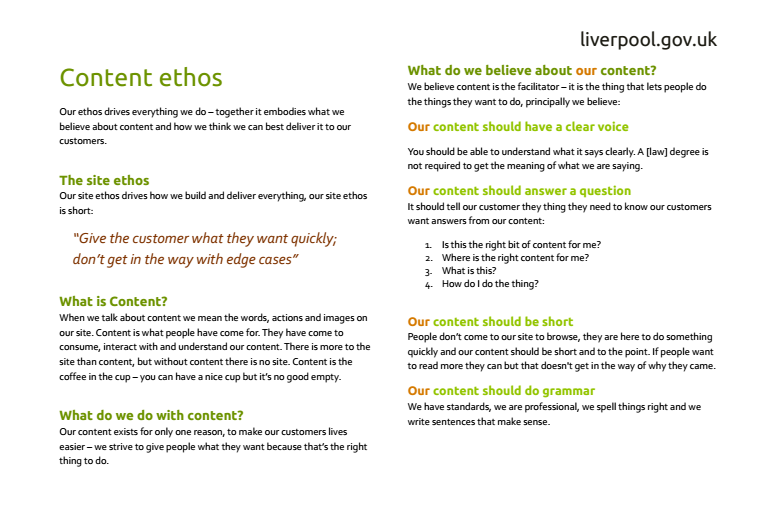Last month I talked about “Ethos”, and getting the heart of why you are doing what you are doing - not just focusing on the How or the What. While building a core ethos around your project is a great first step, it also helps to go deeper, and get more specific with certain areas of the work.
Taking the core site ethos, I like to break it down into specialist areas, and get people involved from each level of the project. Often, this means creating a number of sub-ethos documents, one for each area, so alongside your core ethos document you may have:
- A content ethos
- A design ethos
- A development ethos
You may choose to go even deeper, but I have found that these three have allowed us to capture the essence of each area.
Content Ethos
Building a content ethos can be an interesting task. Content is at the heart of any project; getting the content right, means people will be able to understand what you are trying to do and engage with you where you need them to. Get it wrong, and, well, the rest doesn’t really matter, does it?
Following on from the liverpool.gov.uk site ethos, the content ethos took the core beliefs and applied to them to the work of the content team:
The ethos talks about tone of voice, length, and grammar, because it’s important to the team that these elements are captured. One of the advantages of a centralised content team is that an ethos can talk about these things, and often be the only thing you need.
People regularly asked, during the production of the Liverpool site, if we had style-guides and content guides. The honest answer is, “No.” Not because we felt they weren’t important, but because we had a core team who knew what they were doing, and agreed on the essence of what they were trying to achieve. They didn’t need prescriptive documents telling them how to do the job they were trained and expert in. They just needed to have a common reference as to what they wanted to achieve - and, of course, they sat together, so they were always talking and refining their work as a team.
The one thing the content ethos really allowed us to do was to focus on why the content was getting written. At the heart of our answer are the questions users ask.
Now, users asks many, many, many questions when they visit a website. Why is it so ugly? Where on earth is the search box? When is the bus stop outside my house going to be painted? These are all very valid and in some cases quite specific questions, but when we talked about ethos we wanted to focus on the core questions that get asked no matter why you came.
They are:
- Is this the right bit of content for me?
- Where _is_ the right bit of content for me?
- What is this?
- How do I do the thing?
Clearly labelling content, and making it make sense, as well as signposting people to the right place, are all important. These questions helped us to focus in on just what we were trying to achieve.
Clearly, the content ethos doesn’t stand alone. A lot of the themes were true, right across the project - the questions are relevant to design and development, and indeed each ethos reflected that. All together, the documents added up to four pages long, but they gave us a really deep insight into the project, and allowed everyone to work together for the common goals, not just the Whats and the Hows, but the Why.
